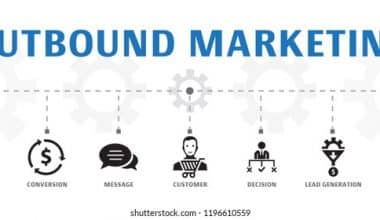Advertising is crucial in marketing campaigns, promoting brands, and persuading customers to engage with them. Targeted advertising allows companies to customize efforts for different audiences, enhancing campaign quality. Understanding targeted advertising can help develop stronger strategies for revenue growth. This article defines targeted advertising, discusses its advantages, provides examples, and offers helpful tips.
What Is Target Advertising?
Targeted advertising is advertising that is specifically tailored to a consumer’s preferences and unique characteristics. Advertisers track consumer browsing habits, such as the profiles people create on company websites, as well as their purchasing patterns and demographic information like age and location. Typically, they get this data from cookies, which are small files of data that record information about visitors to websites.
Additionally, information about website visitors may be sold by third-party websites, such as social media platforms and news websites, to businesses, who then use the data to produce targeted advertisements.
How Does Targeted Advertising Work?
Advertisers use user data, including demographic and behavioral information, to target an audience interested in a product or service. This data is stored in a browser cookie, which shows sites viewed by the user.
Therefore, when a user visits a different website with the same advertising network, ads for the product they viewed on the first site may appear. This is a result of targeted advertising, where ads for the product they viewed on the first site appear on their feed.
What Is The Aim Of Target Marketing?
With the help of targeted marketing, business owners can reach out to specific groups of people and provide them with the best products and services. Additionally, companies that sell brands can communicate with a variety of audiences daily to inform prospective customers about the advantages of purchasing their goods and services.
Example of Targeted Advertising
#1. Traditional TV Ratings
TV stations use Nielsen ratings and data to estimate demographics for their programs, such as sports programs targeting 20–55-year-olds and political news and commentary shows targeting millennials compared to network news shows targeting baby boomers.
#2. Print Media Kits
Media facilities that break down the readerships of magazines, newspapers, and other print media are provided to potential advertisers. Additionally, print media also conducts reader surveys to discover more about the demographics of its readers.
#3. Using Website Analytics
Websites use cookies to track users, providing demographic information for online advertisers. Additionally, website analytics enables businesses to target specific visitors, allowing them to focus on the most relevant ones.
Advertisers can target specific audiences by advertising or using their social media accounts. Some platforms offer ads, while others allow users to create accounts and share product news.
#5. Radio Station Advertising
Radio stations also publish ratings, which have been provided for years by the Arbitron firm, which Nielsen acquired in 2013. Advertisers have the option of purchasing run-of-schedule advertisements (which air at the radio station’s discretion during the day or evening) or choosing to place advertisements on particular programs. Additionally, during a certain time, advertisers may decide to run unscheduled advertisements.
#6. Programmatic Advertising Platforms
Programmatic advertising revolutionizes targeted advertising by allowing advertisers to target specific online consumers without purchasing ads on specific mediums. By directing advertisers to a programmatic advertising exchange, they can place ads on websites visited by those consumers. Additionally, this allows advertisers to reach a wider audience, such as older men who visit a website for young women, without affecting the target audience’s preferences.
What Are The 5 Target Market Strategies?
#1. Mass Marketing
Mass marketing targets the entire population with a single strategy, using mass media like TV, newspapers, and mobile to spread the message about popular products like toothpaste and toothbrushes.
#2. Segment Marketing
Segment marketing, a differentiated targeting strategy, focuses on attracting customers to products. It is expensive but effective for new products entering the market. However, companies need to design unique products, create unique marketing campaigns, and create promotional events to cater to the target audience’s needs.
#3. Niche Marketing
Niche marketing targets a small market segment, such as luxury goods like Rolex and Armani, with limited production and sales. It generates high revenues, has a loyal customer base, and has less competition. However, it has limitations, such as a small market, limited growth opportunities, and minimal competition, making it challenging for companies to improve.
#4. Micromarketing
Micromarketing is customized marketing targeting a smaller audience, focusing on their preferences and desires. Examples include Uber and Red Bull, which use unique local micro-marketing strategies to expand their customer base. Uber focuses on lifestyles, while Red Bull targets youth interested in sports. These strategies aim to cater to specific tastes and preferences, allowing businesses to reach a wider audience and increase their visibility.
#5. Local Marketing
A local marketing strategy involves focusing on nearby areas to connect with customers and increase revenue. Examples include Amazon Local, which offers hotel bookings, spa treatments, and restaurant meals. Additionally, Community-Supported Agriculture shares (CSAs) and mobile marketing are also effective in capturing local markets. Strategies include promotional campaigns, research, surveys, and segment marketing to expand the customer base and reach potential customers.
What Are The 5 Types Of Targeting?
#1. Contextual
Contextual targeting involves placing ad content within related content, such as search engine ads or third-party media hosting sites. This creates a more connected experience for consumers by relating the ad to their interests. Additionally, marketers often purchase ad space on search engines and contact third-party media hosting sites for advertising opportunities.
#2. Behavioral
Behavioral advertising targets ads based on a user’s internet interactions, including clicks, purchases, social media followers, and browsing habits. Therefore, advertisers display ads that align with these patterns, such as biking gear ads for users who regularly watch biking videos. Beneficially, this approach offers an enhanced user experience while reducing the need for ads that may not align with the user’s interests.
#3. Geotargeting
Geotargeting targets ads to local consumers in specific geographical locations using data like postal codes, states, counties, cities, and IP addresses. Companies can use demographic information to display ads to customers in specific areas while geofencing focuses on attracting customers looking for information about a specific area.
Social media targeting involves targeting users based on their browsing history, using demographic information to choose consumers. Marketers can identify conversion statistics through analytics programs, assigning sales labels based on the advertisement. For instance, a clothing company targeting young men can use social media to target potential buyers in that demographic.
#5. Retargeting
Retargeting is a strategy used to retain consumer interest after visiting a company’s site but not making a purchase. Advertisers collect consumer information through cookies and follow up through email or social media advertisements. The goal is to make the ads enticing enough for consumers to return to the site and complete the purchase.
Furthermore, retargeting also applies to consumers who abandon their online shopping carts before finalizing the purchase. Therefore, companies can remind them by sending a reminder, discount code, or offer, tailoring the message to persuade the consumer to return and complete the purchase.
What Are The 4 Methods Of Targeting?
#1. Undifferentiated Marketing
Mass marketing, or undifferentiated marketing, targets the entire market as a single target, making it cost-effective and easier to reach potential customers. IKEA, a Swedish furniture and homeware retailer, has massive appeal due to its high-end tags, eco-friendly practices, and shared experiences.
However, some argue this targeting strategy is outdated due to increased competition, overexposure, and high costs. Consumers now prefer personalized products, content, and messages.
#2. Differentiated Marketing
Differentiated market targeting, also known as segmented marketing, involves isolating primary target segments with the most potential value for a company. Brands develop separate marketing strategies for each segment, avoiding constantly churning out products with no unique selling point.
Therefore, this approach helps brands understand consumer preferences and respond well to personalization, leading to consistent success and increased loyalty for brands offering distinctively featured products.
#3. Concentrated Marketing
Concentrated marketing, also known as niche marketing, targets a specific consumer group to achieve growth potential and build long-lasting relationships. Brands channel their efforts towards this segment, like Lush, which promotes ethical products through word-of-mouth and social media.
However, this approach limits brand control over customers and may not guarantee vegan, animal-tested, or climate change-friendly practices.
#4. Micromarketing
Micromarketing targets specific, localized micro-segments within a niche market, focusing on their unique characteristics. Vagaro, a popular digital marketplace, successfully uses micro-marketing to target users with location-based deals and discounts. The hyper-tailored targeting techniques track user activity, tailoring content and deals accordingly. Vagaro’s versatility and highly personalized discounts make it almost exempt from digital sterilization, despite potential challenges like expansion difficulties and higher acquisition costs.
Why Is the Target Market Important?
#1. It helps you reach the Right Audience
Target marketing helps you identify the target market and audience for your advertising message and tailor your message to the intended recipient, as the buyer may not be the same as the end user.
For example, laundry detergent is typically purchased by women, while toys are primarily marketed to kids, who influence parents’ spending decisions. Messages marketed to kids can encourage parents to make purchases on their behalf.
#2. It points out an underserved Market
Any size of business can compete successfully by finding underserved markets. You can create a niche for your good or service by tailoring your marketing strategy to fit a specific, possibly underserved portion of the overall market rather than attempting to reach every potential customer.
For instance, a small enterprise could be capable of serving a smaller segment of the market than its larger rivals by concentrating resources on a particular customer segment.
#3. It offers Cost-effective Strategies
Making decisions about media allocations is much simpler once you are aware of who you are targeting. Instead of buying advertising space in every magazine, you can choose to advertise only in publications that appeal to young women as your target market. Therefore, by using a target market plan, you’ll end up saving money while receiving a better return on your investment. With a significantly smaller audience that is unlikely to buy your product, media purchases will be more effective.
How Do You Target Customers?
#1. Conduct Interviews:
To target a specific customer base, call potential customers, offer freebies, and conduct interviews. Ask about their pain points and how they solve them. Focus on demographics and situational factors to narrow down your target audience. Finally, find shared characteristics and people with those characteristics to better serve your target audience.
#2. Consider Product Popularity:
To determine your target audience, analyze product popularity, such as an online pet store with 60% dog sales. Analyze sales and feedback reports to understand customer preferences and exceed expectations.
#3. Make Use of SEO Tools To Analyze Site Visitors
SEO tools provide valuable insights into website traffic, keywords, phrases, and related questions. Additionally, they also enable analysis of competitors’ websites, revealing their ranking and most-viewed pages. This information helps businesses understand customers’ needs and improve their content.
#4. Make Sure to Leverage Customer Data
Utilize existing customers’ data to identify your target audience and improve marketing efforts. Utilize a CRM to store and analyze user information, including names, email addresses, phone numbers, and past purchases. This data helps identify your target market, enabling you to enhance campaigns and content.
#5. Get Your Product In Users’ Hands
Selling products on eBay and Amazon is a profitable lead magnet for small sales. By understanding target customers and leveraging platforms like these, businesses can target large organizations and provide tailored products.
Additionally, by keeping end users happy and welcoming feedback, businesses can design and market products tailored to their target audience, ultimately supplying thousands of businesses.
#6. Research Your Competitors
Visit a competitor’s store or website to understand their target audience and identify areas they are missing. Analyze their social media platforms and content to identify niche markets and areas for improvement.
However, keep in mind that your target audience evolves with the economy, technology, and company growth, so don’t stalk your competition but be aware of their evolving needs.
Learn about your audience by analyzing their questions on social media and forums. This helps identify their pain points, needs, and goals, allowing you to target your target market based on their needs rather than demographics.
What Are Target Market Activities?
Target market activities are marketing strategies designed to engage with a specific group of customers or potential customers. Common activities include market research, advertising, social media marketing, content marketing, influencer marketing, and events and promotions.
Furthermore, these activities aim to build relationships with the target market and connect the business’s products or services with their needs and desires. By focusing on these activities, businesses can effectively reach and connect with their target audience, ultimately enhancing their overall marketing efforts.
What Are The Advantages Of Target Marketing?
The following are a few advantages that marketing and sales teams can gain from using targeted advertising:
#1. It increases engagement
Targeted ads customize ads based on customer interests, promoting brand interaction more than generic ones. This is useful for large companies selling diverse products, as higher click-through rates increase the likelihood of customers making purchases.
#2. It has the potential for personalization
Targeted advertising focuses on specific products and services for specific consumer audiences, varying the content to appeal to different customer segments. Personalization for existing customers includes exclusive products or referral codes.
Additionally, split testing helps marketers analyze click-through rates and language for different demographics, benefiting current and future campaigns. This approach effectively appeals to every segment.
#3. It Improves brand awareness
Marketers in growth companies can use targeted advertising to boost brand awareness and establish loyal customers. For instance, fitness device marketers can target users with fitness interests or fitness groups on social media platforms. Influential members can act as brand ambassadors, reaching targeted audiences more effectively.
Disadvantages Of Target Marketing?
#1. It may be too Expensive:
Small companies invest heavily in target marketing, focusing on data access for segmented marketing efforts. Primary research is crucial for identifying target customers, particularly in regional or national markets. In-person surveys alone cannot identify multiple markets, so small companies often hire research agencies for phone surveys, which can cost thousands of dollars.
#2. It may be time-Consuming:
Target marketing can be time-consuming, costly, and potentially misidentified. Small companies often use market segmentation to target customers by analyzing demographic data and determining if their target audience is large enough to earn significant profits. They then search for television programs or print media to reach their core customer group.
#3. Businesses may have to omit Other Customers
Business owners targeting specific consumers may overlook secondary consumers, as many fall outside the average demographic. For instance, an oatmeal manufacturer may advertise its products during cartoons or kids’ programs, but many adults also enjoy cereals for breakfast and late-night snacks. Therefore, failure to target these consumers may result in significant sales losses for the company.
What Is Audience Targeted Advertising?
Audience targeting involves segmenting a prospective customer’s audience based on factors like online behavioral characteristics, demographics, interests, and intent. This helps companies deliver personalized experiences based on customer needs and interests.
Additionally, the process involves gathering data, building profiles, segmenting audiences, activating campaigns, and evaluating performance to revise the targeting strategy. However, its challenges include limited resources, broad reach, and identifying the right frequency of touchpoints.
Social media Targeted advertising allows you to choose the people who are shown your ads based on demographic and behavioral data, such as age ranges or life events. You can also target customized lists. Social media platforms store a lot of data for paid ad campaigns, and you can incorporate your data sources.
For instance, Meta for Business allows you to target people based on interests, gender, relationship status, educational status, age, location, language, occupation, and job title. Additionally, most social media ads now come with the option to block them if they aren’t relevant to you. Therefore, to ensure your ads are relevant, use the available targeting options when publishing creative ads.
GOOGLE ADVERTISING COST: How Much Do Google Ads Cost?
TOP ADVERTISING AGENCIES: Best Agencies in the World, Us, Chicago & LA
FALSE ADVERTISING: Definition and All You Need to Know






